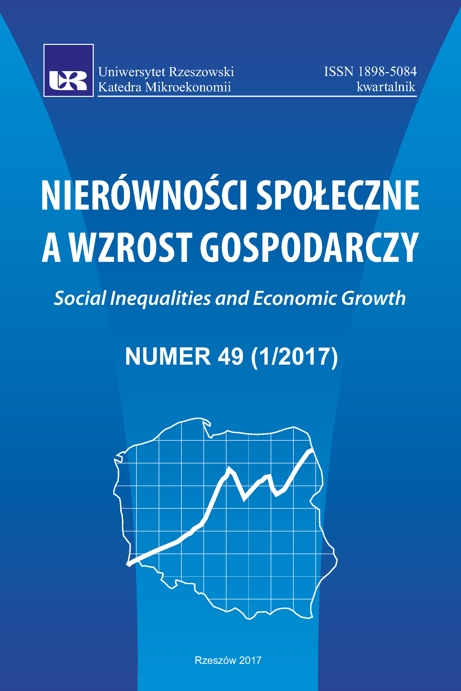Nierówności dochodowe samorządów gminnych w Polsce
Income inequality of communes of Poland
Author(s): Romana Głowicka-Wołoszyn, Andrzej Wołoszyn, Agnieszka KozeraSubject(s): Economy, National Economy, Public Finances
Published by: Wydawnictwo Uniwersytetu Rzeszowskiego
Keywords: income inequality; Theil index; communal revenues
Summary/Abstract: Carrying out the tasks of communal governments hinges on provision of adequate financial resources. High level of own revenues per capita and their high share in total revenues indicate communes’ wider financial self-sufficiency and thereby facilitate better satisfaction of social needs and foster stable local development. Communes’ income potential depends on external conditions such as the country’s economic situation, but also on location, natural resources and conditions, and on internal social and economic circumstances. All these factors may broaden existing disparities in income potential of communes across provinces or administrative types. The study aimed to evaluate levels of income inequalities of Polish communes in 2005-2014. Own revenues and total revenues per capita of communes (excluding communes with county rights) were considered across administrative types and provinces. The research drew on data published by the Central Statistical Office and employed Theil index as inequality measure. For own revenues, the largest income inequalities, though decreasing over time, were observed within rural communes, which may be explained by marked disparity between their functional types. As for provinces, the highest level of inequality was noted in mazowieckie and the lowest in lubuskie. Between-administrative-types and between-provinces inequalities were small. Furthermore, income inequalities of total revenues for all communes of Poland were close to zero.
Journal: Nierówności Społeczne a Wzrost Gospodarczy
- Issue Year: 2017
- Issue No: 49
- Page Range: 396-405
- Page Count: 10
- Language: Polish

